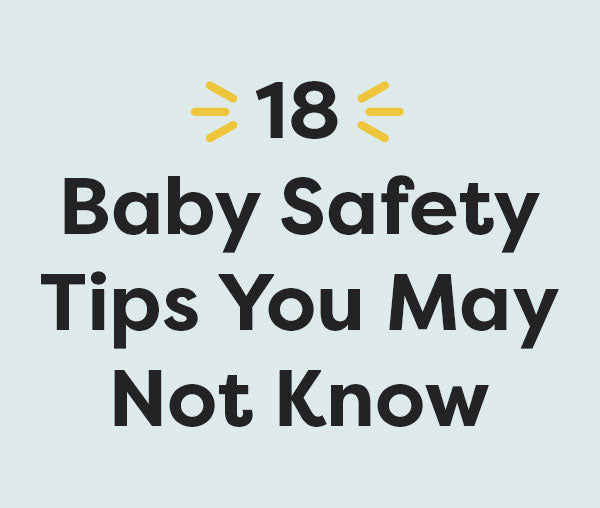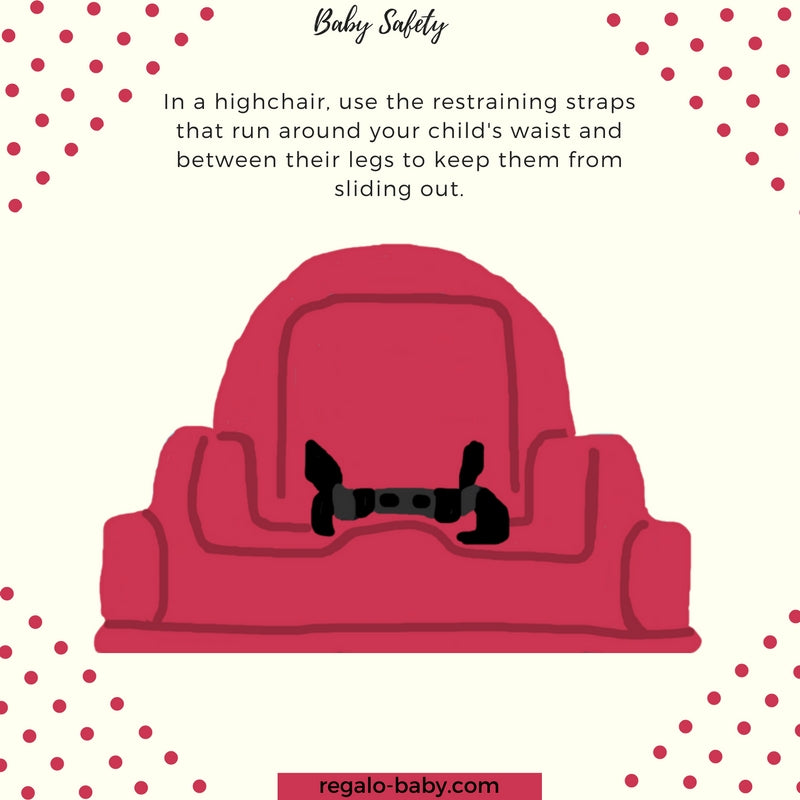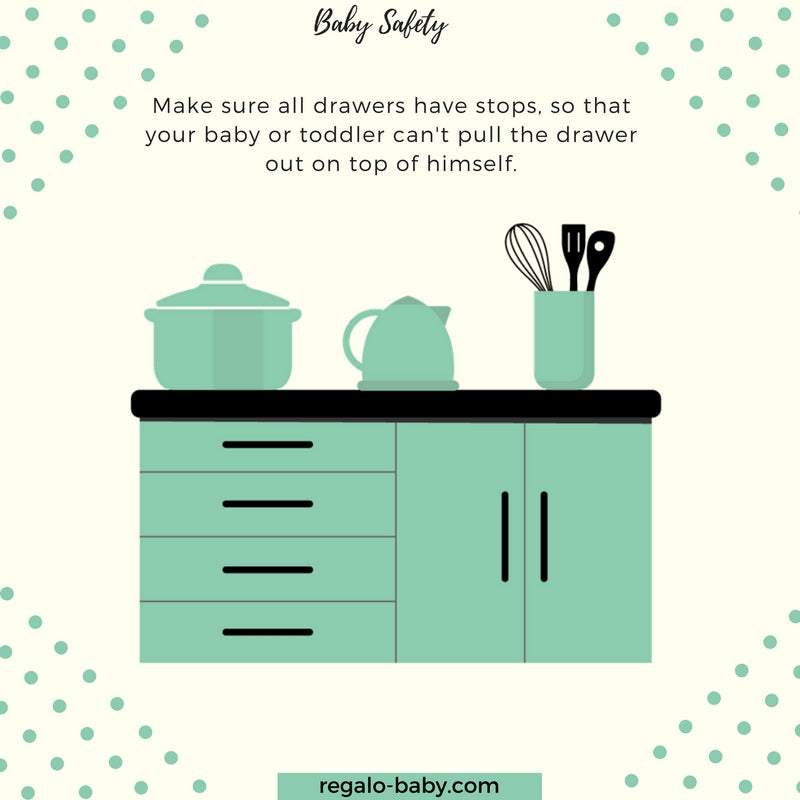
October 30, 2020
18 Baby Safety Tips That You May Have Not Heard About
The joy and fear that goes along with having a baby is real. You're so excited for every new stage and all that they are learning, yet at every turn you are worried about choking, falls, slips, and injuries.
We can't protect our little ones from everything, but there are plenty of little things we can do on a daily basis to keep them from harm.
It can be a daunting task to keep your little one safe, so we have compiled a list of baby safety tips that are less frequently highlighted, but equally important.
Out and About
1. Leave a purse, briefcase, or cell phone in the back seat so that you get in the habit of looking in the back seat before leaving the vehicle.

2. Make an arrangement with your child’s daycare to have them call you if the child doesn’t show up as expected.

3. Write your phone number inside your child’s shoe if they aren’t old enough to remember it.

Time to Eat
4. Avoid giving your child raw carrots, unpeeled apples, nuts, and hard candies.

5. In a highchair, always use restraining straps that run around your child's waist and between his legs to keep him from sliding out.

6. Avoid feeding your child straight from the jar of food. This "double dipping" introduces bacteria from your baby's mouth into the food. The bacteria could grow in the leftovers and result in food poisoning.

Bathtime
7. Gather all the necessary items, such as soap, washcloth, and a towel before the bath begins.

8. Store toys in a breathable mesh bag to avoid bath toys molding.

9. Test the bath water to make sure it is not too hot before placing baby in water, by dipping your elbow in the water.

10. Turn down your water heater to 120 degrees Fahrenheit to avoid scalds.

Baby Safety Tips Around the Home
11. Install safety gates securely in front of stairs and basement doors. Avoid gates with diamond-shaped slats, which provide footholds for climbing toddlers.

12. Make sure all drawers have stops, so that your baby or toddler can't pull the drawer out on top of himself.

13. Attach furniture to the wall so the pieces don’t fall over onto the child.

Crib Safety
14. Avoid soft bedding that might suffocate your baby, such as pillows, blankets, plush toys, and bumpers in the crib.

15. Place your baby facing alternate directions in the crib to discourage resting on the same side of her head. For example, one night place your baby so her head is on the right side of the crib, and the next night place your baby so her head is on the left side of the crib.

16. Make sure the slats of the crib do not have a space larger than 2 ⅜ inches. If you can fit a can of soda between the slats of a crib, that means a child’s head, hand, or foot could get stuck.

Parent preparedness
17. Sign up for a CPR class if you are not already certified. You may want to post a demonstration chart near your phone to be reminded of what you learned.

18. Gather a list of emergency numbers and put them as a note in your phone. Text them to a babysitter or other caregiver as needed. These numbers should include your child's pediatrician, your healthcare provider, your family doctor, a 24-hour nurse-on-call number, the police department, the fire department, 911 reminder, and poison control.

It can be easy to get overwhelmed when you read the endless baby safety tips, but we’re here to remind you that it’s doable, and worth your time.